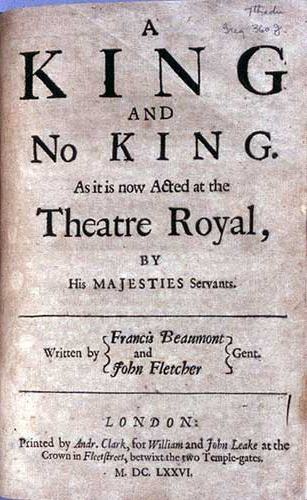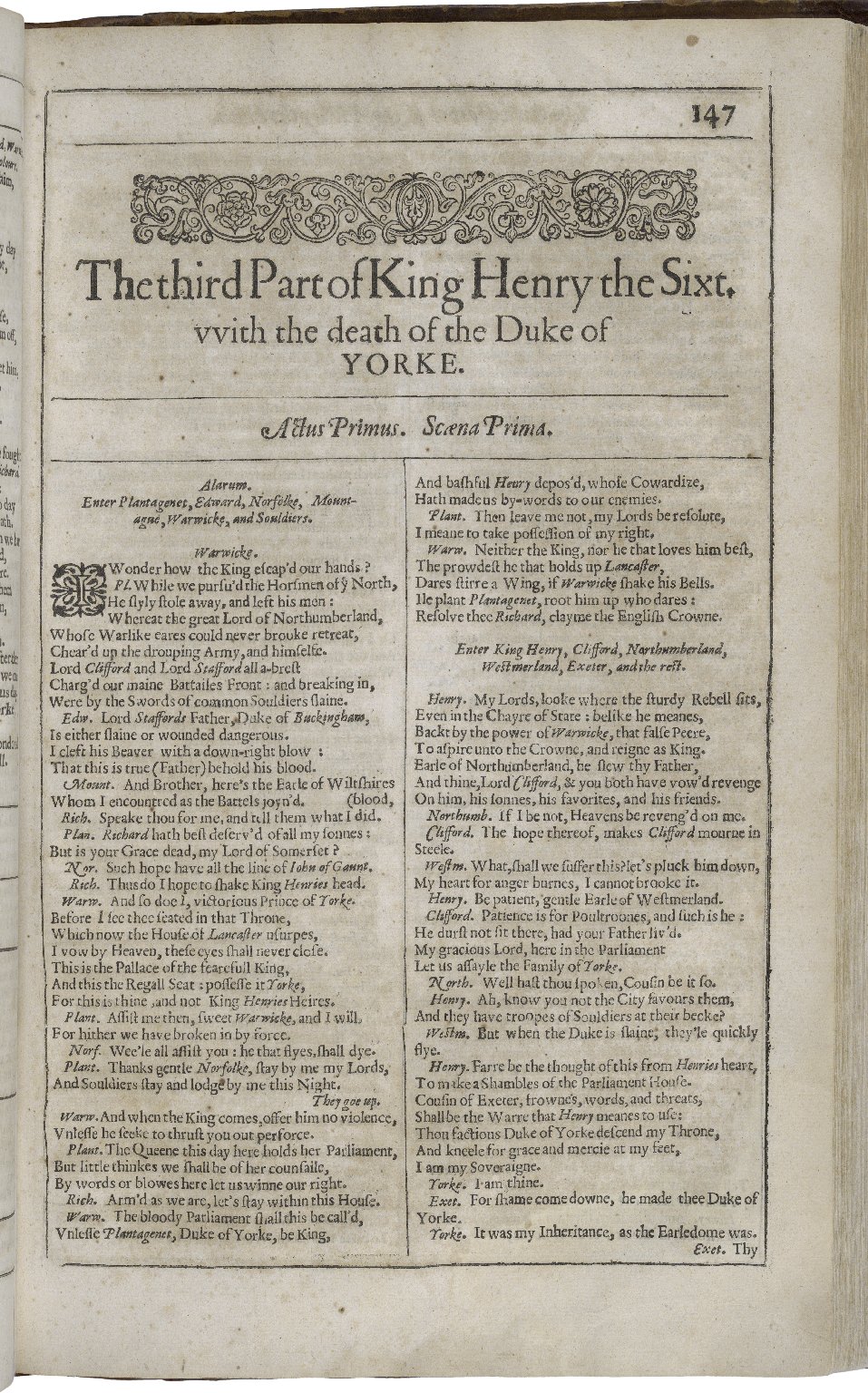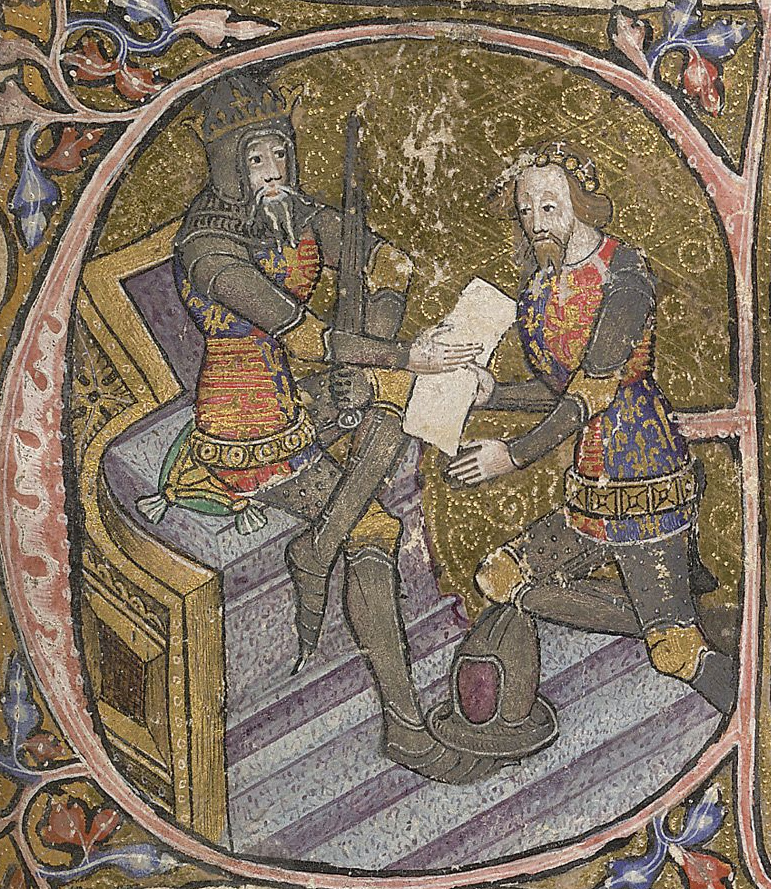|
Brave Spirits Theatre
Brave Spirits Theatre was a small, non-Equity theater based in Arlington, VA. The company was founded in 2011 by Charlene V. Smith and Victoria Reinsel. Brave Spirits was a “feminist-leaning classics troupe”, which produces plays by Shakespeare and his contemporaries, the era of “verse and violence”. The company regularly cast women in traditionally male roles. In doing so, the roles are often fully re-gendered: for example, in the company's repertory production of Henry IV, Part I and Henry IV, Part II (styled as ''Henri IV, Part I'' and ''Henri IV, Part II''), the lead characters were portrayed as Queen Henri IV, Princess Hallie, and Dame Jill Falstaff, with Doll Tearsheet switched to Dick Tearsheet. In late 2020, it was announced that due to the Covid-19 pandemic, Brave Spirits Theatre would be shutting down, with the company's final project being audio recordings of the 8 shows that they were producing before Covid-19. History Brave Spirits' first production was T ... [...More Info...] [...Related Items...] OR: [Wikipedia] [Google] [Baidu] |
Arlington, VA
Arlington County is a county in the Commonwealth of Virginia. The county is situated in Northern Virginia on the southwestern bank of the Potomac River directly across from the District of Columbia, of which it was once a part. The county is coextensive with the U.S. Census Bureau's census-designated place of Arlington. Arlington County is considered to be the second-largest " principal city" of the Washington metropolitan area, although Arlington County does not have the legal designation of independent city or incorporated town under Virginia state law. In 2020, the county's population was estimated at 238,643, making Arlington the sixth-largest county in Virginia by population; if it were incorporated as a city, Arlington would be the third most populous city in the state. With a land area of , Arlington is the geographically smallest self-governing county in the U.S., and by reason of state law regarding population density, it has no incorporated towns within its border ... [...More Info...] [...Related Items...] OR: [Wikipedia] [Google] [Baidu] |
A King And No King
''A King and No King'' is a Jacobean era stage play, a tragicomedy written by Francis Beaumont and John Fletcher and first published in 1619. It has traditionally been among the most highly praised and popular works in the canon of Fletcher and his collaborators. The play's title became almost proverbial by the middle of the 17th century, and was used repeatedly in the polemical literature of the mid-century political crisis to refer to the problem and predicament of King Charles I. Date and performance Unlike some of the problematic Beaumont and Fletcher works (see, for example, '' Love's Cure,'' or '' Thierry and Theodoret''), there is little doubt about the date and authorship of ''A King and No King.'' The records of Sir Henry Herbert, the Master of the Revels during much of the 17th century, assert that the play was licensed in 1611 by Herbert's predecessor Sir George Buck. The drama was acted at Court by the King's Men on 26 December 1611, again in the following ... [...More Info...] [...Related Items...] OR: [Wikipedia] [Google] [Baidu] |
Richard III (play)
''Richard III'' is a play by William Shakespeare. It was probably written c. 1592–1594. It is labelled a history in the First Folio, and is usually considered one, but it is sometimes called a tragedy, as in the quarto edition. ''Richard III'' concludes Shakespeare's first tetralogy (also containing '' Henry VI, Part 1'', ''Henry VI, Part 2'', and '' Henry VI, Part 3'') and depicts the Machiavellian rise to power and subsequent short reign of King Richard III of England. It is the second longest play in the Shakespearean canon and is the longest of the First Folio, whose version of ''Hamlet'', otherwise the longest, is shorter than its quarto counterpart. The play is often abridged for brevity, and peripheral characters removed. In such cases, extra lines are often invented or added from elsewhere to establish the nature of the characters' relationships. A further reason for abridgment is that Shakespeare assumed his audiences' familiarity with his ''Henry VI'' plays, fr ... [...More Info...] [...Related Items...] OR: [Wikipedia] [Google] [Baidu] |
Henry VI, Part 3
''Henry VI, Part 3'' (often written as ''3 Henry VI'') is a history play by William Shakespeare believed to have been written in 1591 and set during the lifetime of King Henry VI of England. Whereas '' 1 Henry VI'' deals with the loss of England's French territories and the political machinations leading up to the Wars of the Roses and '' 2 Henry VI'' focuses on the King's inability to quell the bickering of his nobles, and the inevitability of armed conflict, ''3 Henry VI'' deals primarily with the horrors of that conflict, with the once stable nation thrown into chaos and barbarism as families break down and moral codes are subverted in the pursuit of revenge and power. Although the ''Henry VI'' trilogy may not have been written in chronological order, the three plays are often grouped together with ''Richard III'' to form a tetralogy covering the entire Wars of the Roses saga, from the death of Henry V in 1422 to the rise to power of Henry VII in 1485. It was the succ ... [...More Info...] [...Related Items...] OR: [Wikipedia] [Google] [Baidu] |
Henry VI, Part 2
''Henry VI, Part 2'' (often written as ''2 Henry VI'') is a history play by William Shakespeare believed to have been written in 1591 and set during the lifetime of King Henry VI of England. Whereas ''Henry VI, Part 1'' deals primarily with the loss of England's French territories and the political machinations leading up to the Wars of the Roses, and ''Henry VI, Part 3'' deals with the horrors of that conflict, ''2 Henry VI'' focuses on the King's inability to quell the bickering of his nobles, the death of his trusted adviser Humphrey, Duke of Gloucester, the rise of the Duke of York and the inevitability of armed conflict. As such, the play culminates with the opening battle of the War, the First Battle of St Albans (1455). Although the ''Henry VI'' trilogy may not have been written in chronological order, the three plays are often grouped together with ''Richard III'' to form a tetralogy covering the entire Wars of the Roses saga, from the death of Henry V in 1422 to the ... [...More Info...] [...Related Items...] OR: [Wikipedia] [Google] [Baidu] |
Henry VI, Part 1
''Henry VI, Part 1'', often referred to as ''1 Henry VI'', is a history play by William Shakespeare—possibly in collaboration with Christopher Marlowe and Thomas Nashe—believed to have been written in 1591. It is set during the lifetime of King Henry VI of England. Whereas ''Henry VI, Part 2'' deals with the King's inability to quell the bickering of his nobles and the inevitability of armed conflict and ''Henry VI, Part 3'' deals with the horrors of that conflict, ''Henry VI, Part 1'' deals with the loss of England's French territories and the political machinations leading up to the Wars of the Roses, as the English political system is torn apart by personal squabbles and petty jealousy. Although the ''Henry VI'' trilogy may not have been written in chronological order, the three plays are often grouped together with ''Richard III'' to form a tetralogy covering the entire Wars of the Roses saga, from the death of Henry V in 1422 to the rise to power of Henry VII in 14 ... [...More Info...] [...Related Items...] OR: [Wikipedia] [Google] [Baidu] |
Henry V (play)
''Henry V'' is a history play by William Shakespeare, believed to have been written near 1599. It tells the story of King Henry V of England, focusing on events immediately before and after the Battle of Agincourt (1415) during the Hundred Years' War. In the First Quarto text, it was titled ''The Cronicle History of Henry the fift'', and ''The Life of Henry the Fifth'' in the First Folio text. The play is the final part of a tetralogy, preceded by '' Richard II'', '' Henry IV, Part 1'', and '' Henry IV, Part 2''. The original audiences would thus have already been familiar with the title character, who was depicted in the ''Henry IV'' plays as a wild, undisciplined young man. In ''Henry V'', the young prince has matured. He embarks on an expedition to France and, his army badly outnumbered, defeats the French at Agincourt. Characters * Chorus The English * King Henry V * Duke of Gloucester – Henry's brother * Duke of Bedford – Henry's brother * Duke of Clarence ... [...More Info...] [...Related Items...] OR: [Wikipedia] [Google] [Baidu] |
Richard II
Richard II (6 January 1367 – ), also known as Richard of Bordeaux, was King of England from 1377 until he was deposed in 1399. He was the son of Edward the Black Prince, Prince of Wales, and Joan, Countess of Kent. Richard's father died in 1376, leaving Richard as heir apparent to his grandfather, King Edward III; upon the latter's death, the 10-year-old Richard succeeded to the throne. During Richard's first years as king, government was in the hands of a series of regency councils, influenced by Richard's uncles John of Gaunt and Thomas of Woodstock. England then faced various problems, most notably the Hundred Years' War. A major challenge of the reign was the Peasants' Revolt in 1381, and the young king played a central part in the successful suppression of this crisis. Less warlike than either his father or grandfather, he sought to bring an end to the Hundred Years' War. A firm believer in the royal prerogative, Richard restrained the power of the aristocracy ... [...More Info...] [...Related Items...] OR: [Wikipedia] [Google] [Baidu] |
Henriad
In Shakespearean scholarship, Henriad refers to a group of William Shakespeare's history plays. It is sometimes used to refer to a group of four plays (a tetralogy), but some sources and scholars use the term to refer to eight plays. In the 19th century, Algernon Charles Swinburne used the term to refer to three plays, but that use is not current. In one sense, Henriad refers to: ''Richard II; Henry IV, Part 1; Henry IV, Part 2;'' and '' Henry V'' — with the implication that these four plays are Shakespeare's epic, and that Prince Harry, who later becomes Henry V, is the epic hero. (This group may also be referred to as the "second tetralogy" or "second Henriad".) In a more inclusive meaning, Henriad refers to eight plays: the tetralogy mentioned above (''Richard II, Henry IV, Part 1, Henry IV, Part 2,'' and ''Henry V''), plus four plays that were written earlier, and are based on the civil wars known as The Wars of the Roses — '' Henry VI, Part 1, Henry VI, Part 2, ... [...More Info...] [...Related Items...] OR: [Wikipedia] [Google] [Baidu] |
'Tis Pity She's A Whore
''Tis Pity She's a Whore'' (original spelling: ''Tis Pitty Shee's a Who'' 'o'''re'') is a tragedy written by John Ford. It was first performed or between 1629 and 1633, by Queen Henrietta's Men at the Cockpit Theatre. The play was first published in 1633, in a quarto printed by Nicholas Okes for the bookseller Richard Collins. Ford dedicated the play to John Mordaunt, 1st Earl of Peterborough and Baron of Turvey. Synopsis Giovanni, recently returned to Parma from university in Bologna, has developed an incestuous passion for his sister Annabella and the play opens with his discussing this ethical problem with Friar Bonaventura. Bonaventura tries to convince Giovanni that his desires are evil despite Giovanni's passionate reasoning and eventually persuades him to try to rid himself of his feelings through repentance. Annabella, meanwhile, is being approached by a number of suitors including Bergetto, Grimaldi, and Soranzo. She is not interested in any of them. Giovanni fin ... [...More Info...] [...Related Items...] OR: [Wikipedia] [Google] [Baidu] |
Arlington County, Virginia
Arlington County is a county in the Commonwealth of Virginia. The county is situated in Northern Virginia on the southwestern bank of the Potomac River directly across from the District of Columbia, of which it was once a part. The county is coextensive with the U.S. Census Bureau's census-designated place of Arlington. Arlington County is considered to be the second-largest " principal city" of the Washington metropolitan area, although Arlington County does not have the legal designation of independent city or incorporated town under Virginia state law. In 2020, the county's population was estimated at 238,643, making Arlington the sixth-largest county in Virginia by population; if it were incorporated as a city, Arlington would be the third most populous city in the state. With a land area of , Arlington is the geographically smallest self-governing county in the U.S., and by reason of state law regarding population density, it has no incorporated towns within its ... [...More Info...] [...Related Items...] OR: [Wikipedia] [Google] [Baidu] |
Henry IV, Part I
''Henry IV, Part 1'' (often written as ''1 Henry IV'') is a history play by William Shakespeare, believed to have been written no later than 1597. The play dramatises part of the reign of King Henry IV of England, beginning with the battle at Homildon Hill late in 1402, and ending with King Henry's victory in the Battle of Shrewsbury in mid-1403. In parallel to the political conflict between King Henry and a rebellious faction of nobles, the play depicts the escapades of King Henry's son, Prince Hal (the future King Henry V), and his eventual return to court and favour. ''Henry IV, Part 1'' is the first of Shakespeare's two plays which deal with the reign of Henry IV (the other being '' Henry IV, Part 2''), and the second play in the Henriad, a modern designation for the tetralogy of plays that deal with the successive reigns of Richard II, Henry IV, and Henry V. From its first performance on, it has been an extremely popular work both with the public and critics. Characters ... [...More Info...] [...Related Items...] OR: [Wikipedia] [Google] [Baidu] |
.jpg)








